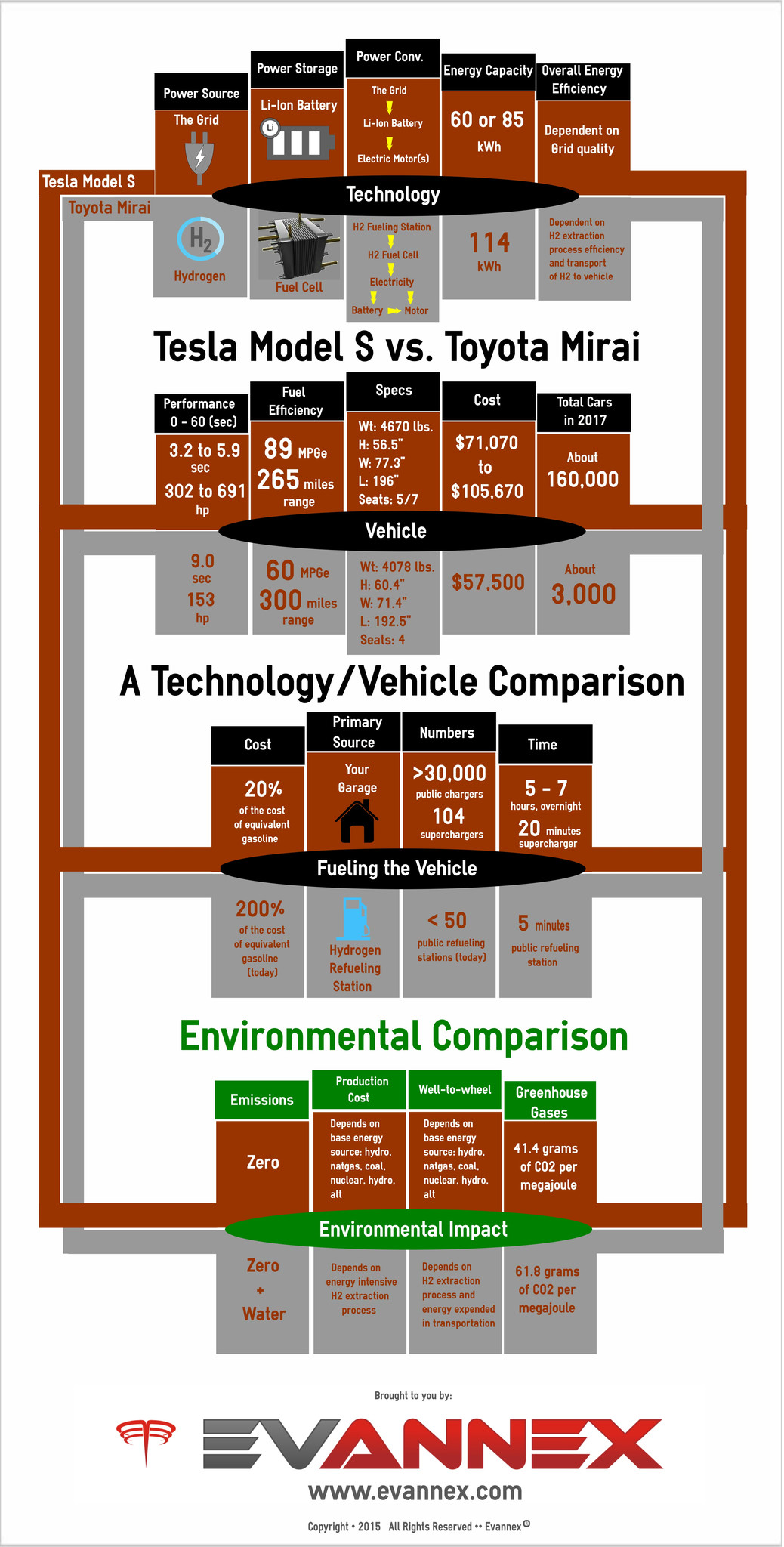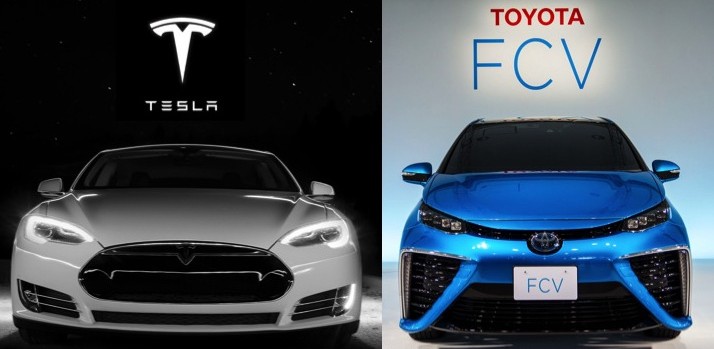

News
Tesla Model S vs. Toyota Mirai Comparison
With the introduction of the new hydrogen-powered Toyota Mirai (the name means “future” in Japanese), there has been a lot of media hype about vehicles that use hydrogen fuel cells as their power source. Toyota, Honda and a number of other automobile companies have announced plans to build cars based on fuel cell technology.
Fundamentally, a hydrogen fuel cell produces electricity via an electro-chemical reaction that drives an electric motor that creates the motive force for a car. The technology requires high-pressure storage of liquid hydrogen, a fuel cell to convert the H2 to electrons, a control system to deliver the resultant electricity to an electric motor and/or battery that in turn drives the wheels of the vehicle. It’s a workable, if somewhat complex system that produces zero emissions and water as a by-product.
In the media, there are three major claims that are being made about cars powered by hydrogen: (1) that H2 is a 21st century energy source and will ultimately become the preferred power source for automobiles; (2) that hydrogen-powered fuel cells represent a significant improvement in environmentally safe automotive fuel, and (3) that cars like the Toyota Mirai represent a major threat to battery electric vehicles (BEVs) like the Tesla Model S.
Are any or all of these claims true? We thought we’d take a look.
After going through the popular literature and government/academic reports, we decided that the best way to present the array of information collected was with an infographic, “Tesla Model S vs. Toyota Mirai: A Technology/Vehicle Comparison,” that examines four broad categories of concern:
- underlying technology that powers the vehicle
- the two vehicles themselves
- technology required for refueling the vehicle, and
- environmental impact
Tesla Model S vs. Toyota Mirai
Technology
EV technology has been around for 100 years. It represents a remarkably simple method for automotive power that is constrained solely by the capacity of the vehicle’s batteries. Fuel cells are evolving rapidly and provide more energy capacity than modern Li-Ion batteries, but they require liquid hydrogen to be stored on board the vehicle in pressurized tanks. The Tesla Model S has an energy capacity of either 60 kWh or 85 kWh while the Toyota Mirai produces 114 kWh. The overall energy efficiency (from an environmental viewpoint) of BEVs is dependent on the efficiency of the electric grid from which a BEV obtains its diet of electrons. The efficiency of hydrogen-powered cars is impacted by the process that extracts hydrogen from other sources and the method by which hydrogen is transported to a refueling station.
The winner: It’s close, but the simplicity of the BEV system gives the underlying technology of the Model S a slight edge.
The Vehicles
Both the Tesla Model S and the Toyota Mirai are expensive, but that’s the price of new technology. The Model S is a premium, high performance automobile in ever sense of the word. It is a visually beautiful car that conjures images of a Aston Martin or Jaguar and has been lauded as one of the best sedans in the world. It has won praise from virtually every automotive media source, and is one of the safest, roomiest cars on the planet. The Toyota Mirai has an eccentric look that gives it a boxy Prius-like feel. It appears to provide good, basic transportation, but it is not for those who want a bit more than good, basic transportation. Finally, the Tesla Model S is here today. By 2017, there will be about 160,000 Model S vehicles on the road. Toyota projects that only 3,000 Mirais will be in the field by the same date.
The winner: No contest! The Model S is far superior to the Mirai in virtually every respect except for range.
Fueling the Vehicle
In our view, one of the major benefits of BEVs is that you refuel them at home, overnight, while you’re sleeping, so that your Model S is “full” every morning. Unless you travel long distances on a regular basis, you will rarely need a Tesla Supercharger or any other refueling source away from home. That’s huge, and often get’s lost in the discussion of “range anxiety” that always seems to invade the thinking of those who don’t own a Model S. Although fuel cells are sexy, it seems odd to us that Toyota has returned to a 20th century fueling station paradigm. In essence, there is little difference between refueling a Mirai and refueling a Camry. Sure, the fuel is different, but you have to hunt for a specific refueling station as your Mirai slowly depletes its hydrogen. No charging at home—ever.
The winner: No contest! Refueling your vehicle at home is a convenience that represents 21st century thinking. Model S provides that convenience. Mirai does not.
Environmental Impact
Both the Model S and the Mirai are environmentally impressive. Both have zero emissions and relatively low “well-to-wheel” inefficiencies. In our view, the beauty of a BEV is that it becomes increasingly friendly to the environment as our electric grid infrastructure improves. There is no need to separately transport fuel to a refueling station (a requirement for a hydrogen fuel cell vehicle) eliminating both the cost and the environmental impact of secondary fuel transport.
The winner: It’s a toss up. Both cars are environmentally friendly and both will improve as the grid becomes cleaner and as hydrogen extraction processes become more efficient and cost effective.
As a young engineering student I was taught that when you consider alternative systems that both achieve the same result, always choose the less complex approach. That’s common sense, but it appears that when faced with the same choice, Toyota chose the more complex option. Possibly, their engineers or marketing people were driven by concern about range, but that’s simply not as big an issue as they think it is. BEVs represent simplicity, and in an increasingly complex world, that’s something that many consumers like.
Is the Mirai (or another similar H2 vehicle) a “Tesla Killer”? Not a chance!
Originally published on EVannex

News
Tesla 2025 Holiday Update: Here’s what it includes, and what it’s missing
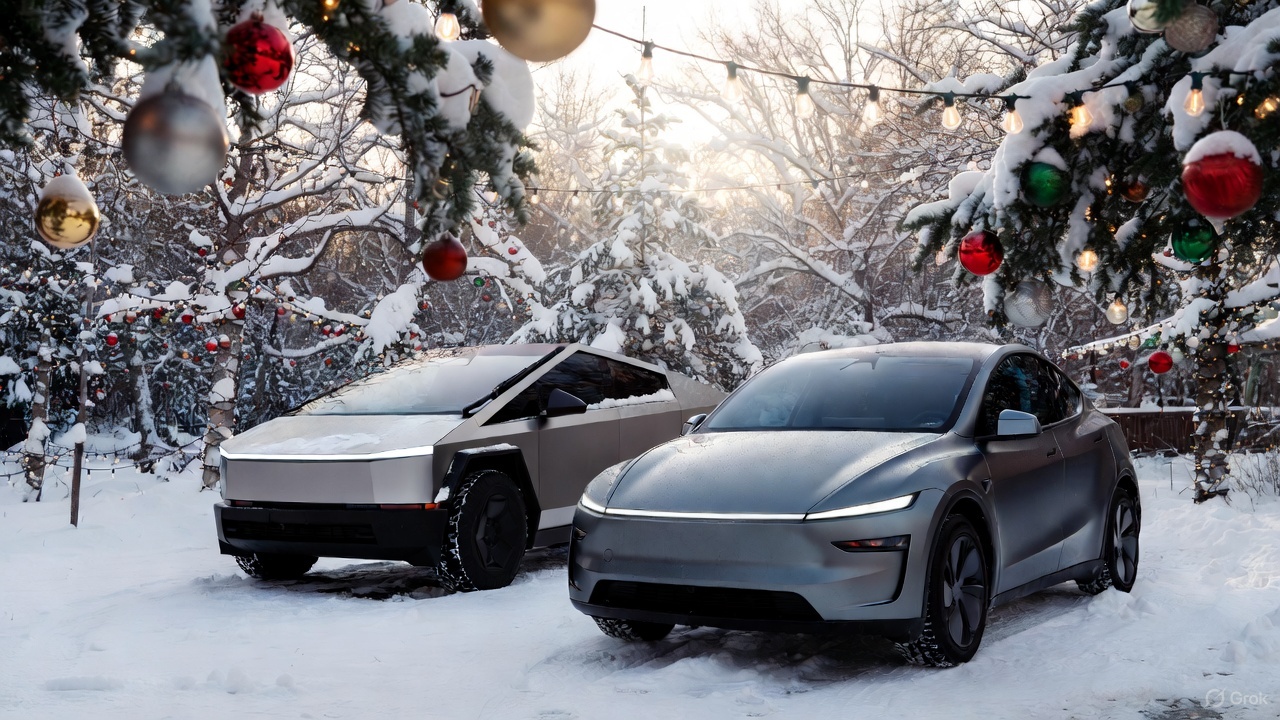
Tesla has finally announced the features for the 2025 Holiday Update, which includes a wide variety of new inclusions that are both functional and just for fun.
The new features are plentiful, but there were a handful of things we were expecting to see based on what we know. We don’t want to sound ungrateful, because there are a lot of great new things on the way with this update.
Here’s what was included:
Grok with Navigation Commands (Beta)
Grok will now have the ability to add and edit navigation destinations, which is a drastic improvement considering Tesla owners had to use their standard voice commands for this in the past.

The utilization of Grok will likely improve the navigation experience by offering some insight into your destination, including reviews and other points of interest nearby.
It will be enabled by using Grok’s “Assistant” personality.
Tesla Photobooth
“Turn your car into a photobooth! Take selfies from inside your Tesla & give yourself a makeover with fun filters, stickers, and emojis. Share with others right from the Tesla app.”
This feature will be available within the Toybox.
Dog Mode Live Activity
When using Dog Mode to keep your four-legged friend comfortable in the car, you’ll now be able to check in on them as it will share periodic snapshots of the cabin, along with live updates on temperature, battery, and climate conditions.
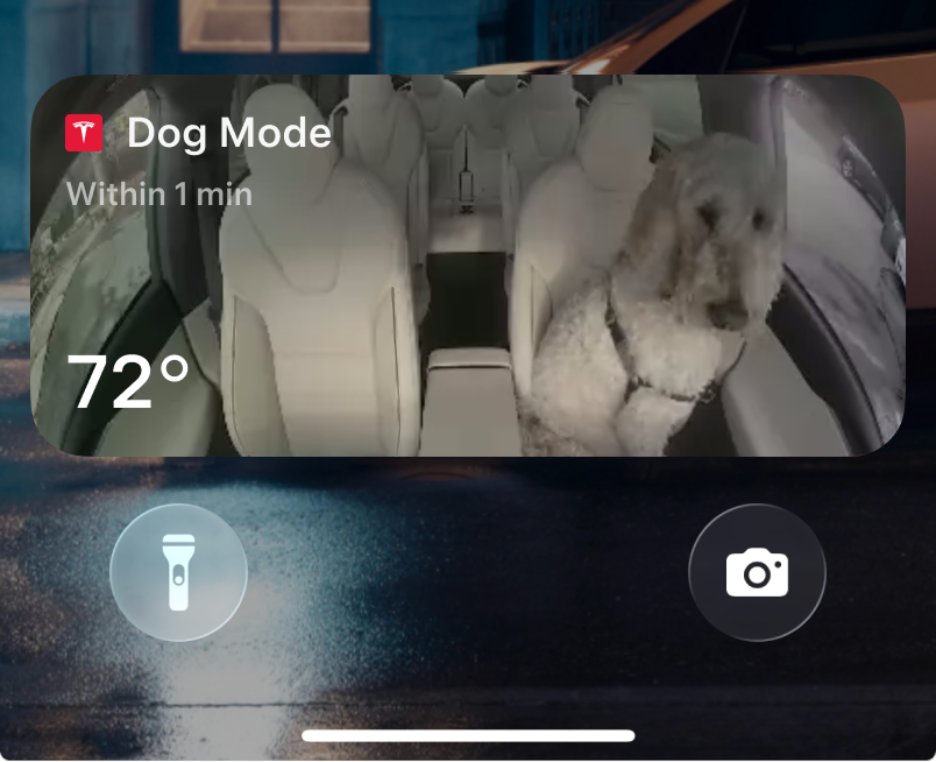
Dashcam Viewer Update
Dashcam clips are awesome, but they’re void of a lot of information, which could be useful in some instances, especially if there is an accident.
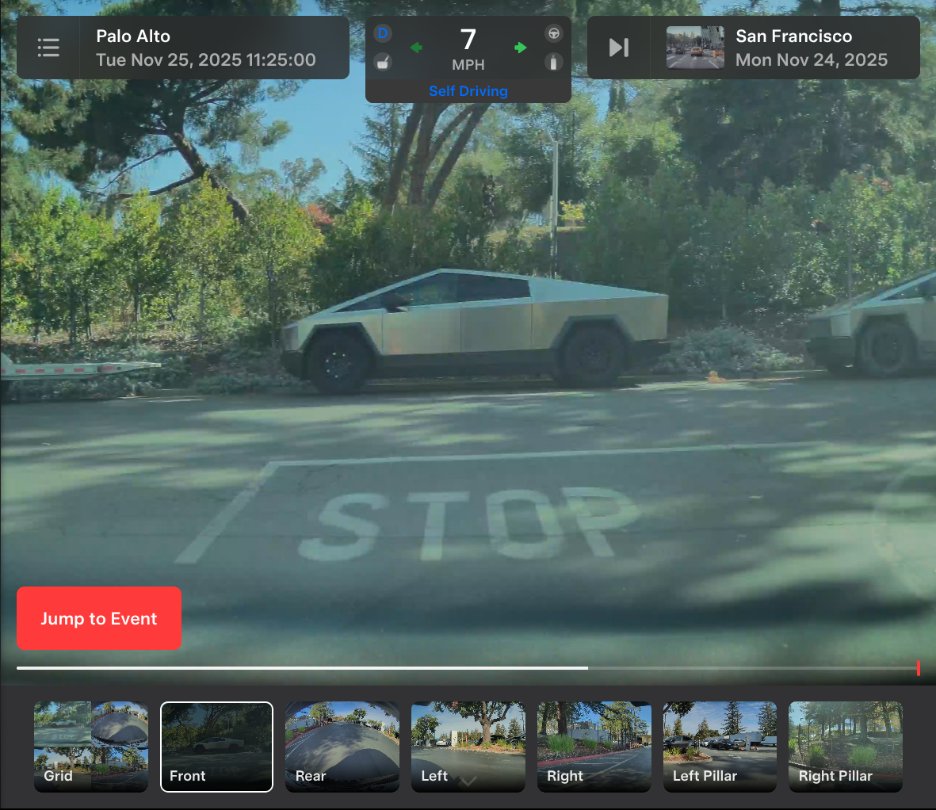
Now, there will be additional details included on each Dashcam clip, like speed, steering wheel angle, and Self-Driving state.
Santa Mode
New graphics, trees, and a lock chime are now available.
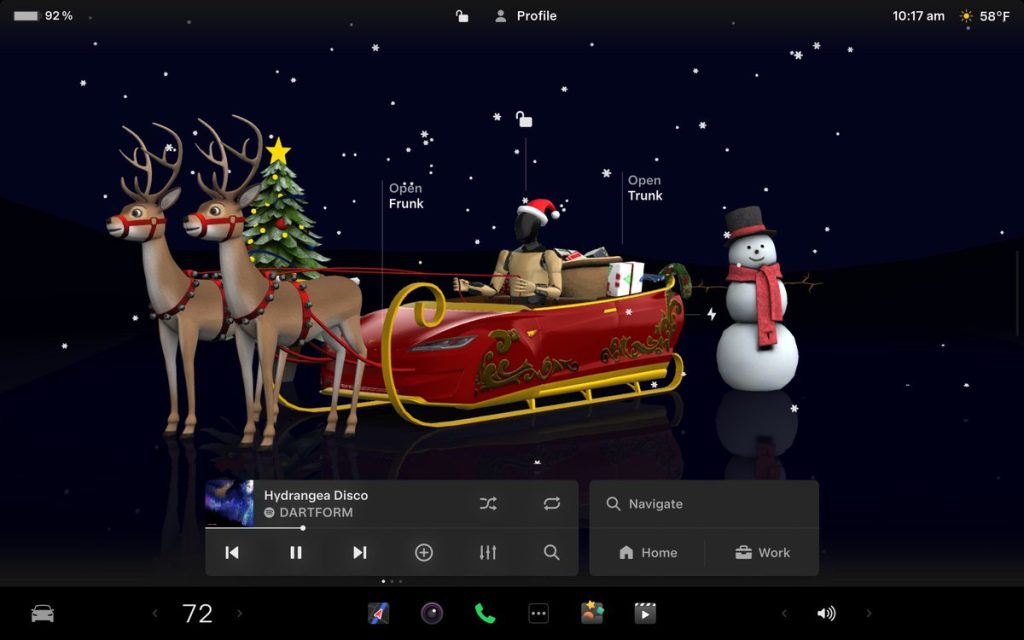
Light Show Update
A new Light Show, called Jingle Rush, will be available.
Custom Wraps and License Plates in Colorizer
Colorizer will now be known as “Paint Shop” in the Toybox. You will now be able to personalize your Tesla Avatar with window tints, custom wraps, and license plates. Preloaded designs will be available, but owners will be able to use their USB Flash Drives to create one that suits their style.
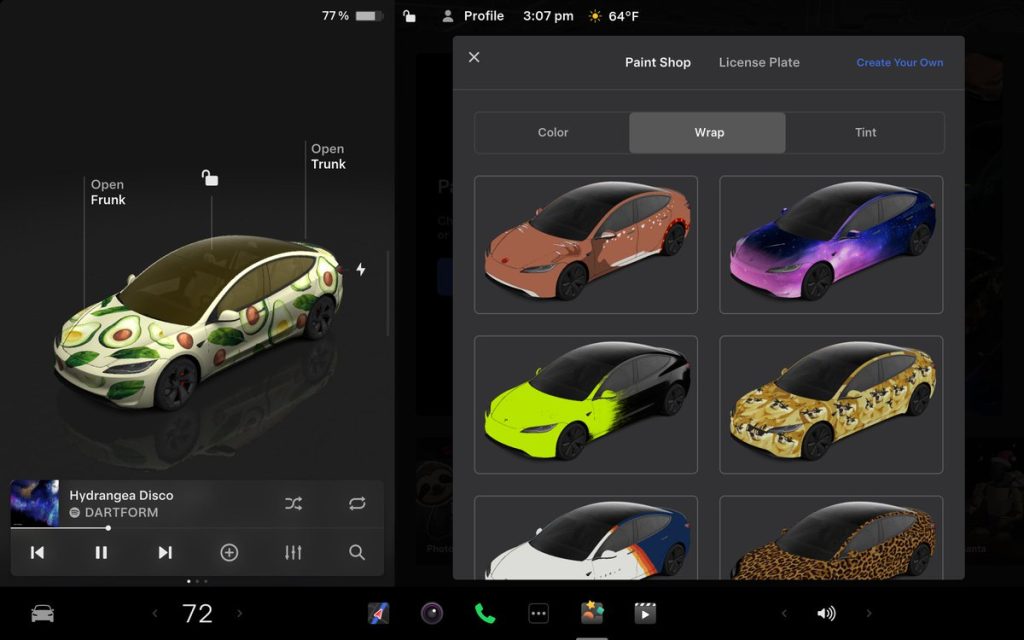
Navigation Improvements
Changing the order of your destinations will be easier through a new “Favorites” tab, and Home and Work can now be set by dropping a pin.
There will also be “Suggested Destinations,” which will be determined through recent trips and habits while parked.
Supercharger Site Map
Perhaps the most significant feature of the Holiday Update, Tesla is adding a 3D view of select Tesla Superchargers by tapping “View Site Map.”
When navigating to a location with this capability, the site layout, live occupancy, and nearby amenities will be available. Drivers will also be able to choose which stall to Supercharge.
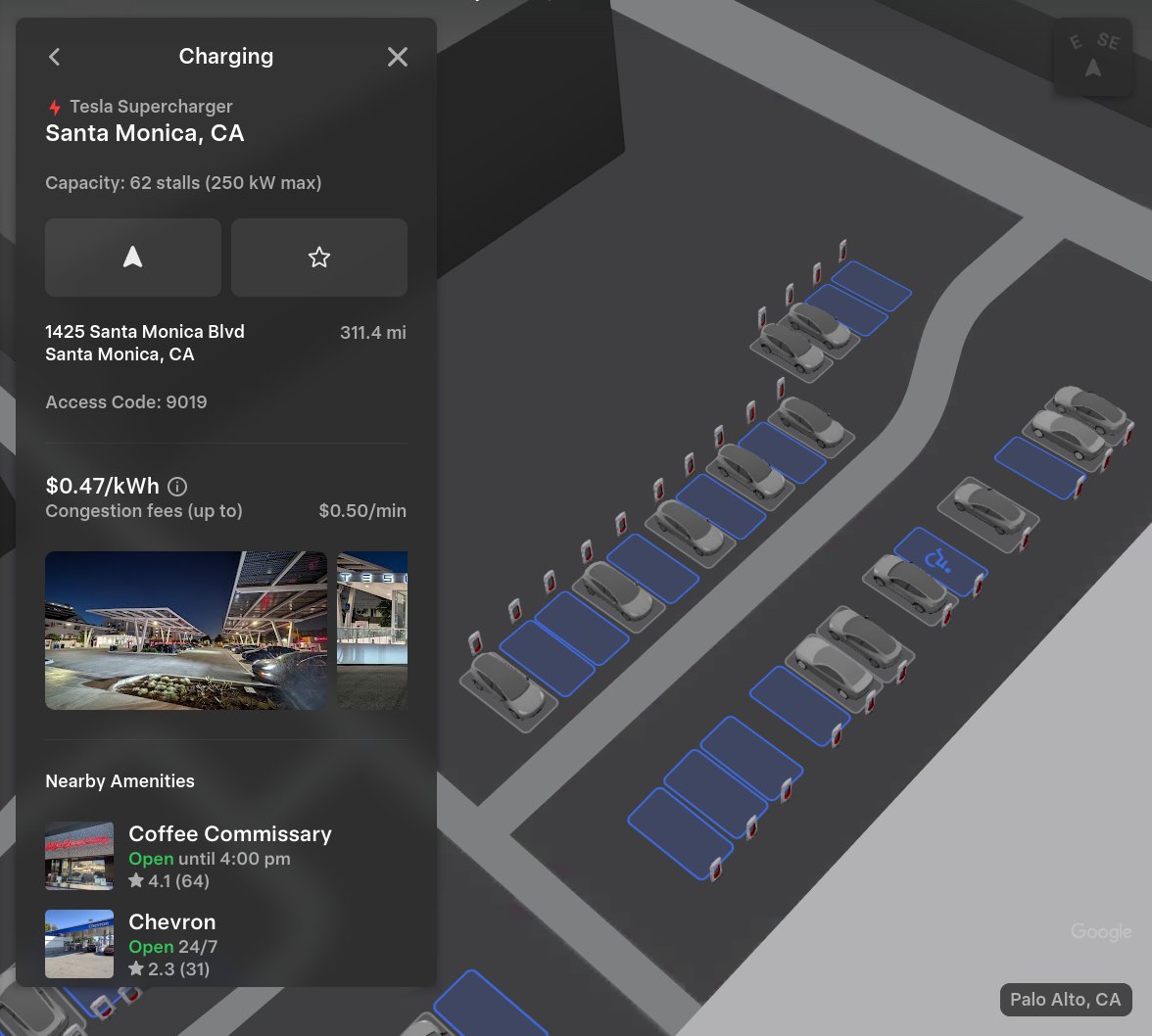
This is only available at a handful of locations currently, but it will expand to more Superchargers as it becomes more robust.
Automatic Carpool Lane Routing
Navigation will include an option to utilize carpool lanes. Your route will automatically choose the carpool lane when eligible.
Phone Left Behind Chime
If the in-car occupant detection system does not see anyone in the car and there is a phone key, or if a phone is left inside the cabin, your Tesla will chime a few seconds after the doors close.
Charge Limit Per Location
You can now save a charge limit for the current location while parked and it will be applied automatically the next time you charge there.
ISS Docking Simulator
In a SpaceX collaboration, Tesla has added this game to its in-car Arcade:
“Become an astronaut and prove your skills by docking with the International Space Station. Control & guide the rocket in this 3D docking simulator game using a set of controls based on actual interfaces used by NASA astronauts.”
Additional Improvements
-
Enable or disable wireless phone charging pads in Controls > Charging (S3XY) or Controls > Outlets & Mods (Cybertruck)
-
Add Spotify tracks to your queue right from the search screen & scroll through large Spotify playlists, albums, podcasts, audiobooks & your library seamlessly, without paging
-
Take the vibes up another level with rainbow colors during Rave Cave. Accent lights color will change along with the beats of your music. App Launcher > Toybox > Light Sync
-
Lock Sound now includes Light Cycle from Tron Mode. Toybox > Boombox > Lock Sound
What’s Missing
There are a handful of features we expected to see with the Holiday Update, but were not included.
Banish Feature
Tesla has been teasing the Banish functionality for quite a few years, but evidently, it is not quite there yet.
Banish will allow owners to get out of their vehicle at the entrance of their destination, and the car will go find a spot and park itself. Some refer to it as “Reverse Summon.”
Apple CarPlay
With all of the rumors regarding Apple CarPlay and then the evidence that Tesla was working to bring CarPlay to vehicles, we really expected it to come with the Holiday Update.
We’re not upset it’s not here, though. Tesla’s in-car UI is significantly better, at least in our opinion.
Parking Spot Selection
One of the biggest gripes about the new Arrival Features with Full Self-Driving v14 is that choosing a set parking spot is not available. This is especially frustrating for Tesla owners who rent or live in townhouse neighborhoods or apartment complexes with assigned parking.
Tesla seems to be working on this based on the release notes for v14.2, where it said future capabilities would include Parking Spot Selection.
News
Man credits Grok AI with saving his life after ER missed near-ruptured appendix
The AI flagged some of the man’s symptoms and urged him to return to the ER immediately and demand a CT scan.

A 49-year-old man has stated that xAI’s Grok ended up saving his life when the large language model identified a near-ruptured appendix that his first ER visit dismissed as acid reflux.
After being sent home from the ER, the man asked Grok to analyze his symptoms. The AI flagged some of the man’s symptoms and urged him to return immediately and demand a CT scan. The scan confirmed that something far worse than acid reflux was indeed going on.
Grok spotted what a doctor missed
In a post on Reddit, u/Tykjen noted that for 24 hours straight, he had a constant “razor-blade-level” abdominal pain that forced him into a fetal position. He had no fever or visible signs. He went to the ER, where a doctor pressed his soft belly, prescribed acid blockers, and sent him home.
The acid blockers didn’t work, and the man’s pain remained intense. He then decided to open a year-long chat he had with Grok and listed every detail that he was experiencing. The AI responded quickly. “Grok immediately flagged perforated ulcer or atypical appendicitis, told me the exact red-flag pattern I was describing, and basically said “go back right now and ask for a CT,” the man wrote in his post.
He copied Grok’s reasoning, returned to the ER, and insisted on the scan. The CT scan ultimately showed an inflamed appendix on the verge of rupture. Six hours later, the appendix was out. The man said the pain has completely vanished, and he woke up laughing under anesthesia. He was discharged the next day.
How a late-night conversation with Grok got me to demand the CT scan that saved my life from a ruptured appendix (December 2025)
byu/Tykjen ingrok
AI doctors could very well be welcomed
In the replies to his Reddit post, u/Tykjen further explained that he specifically avoided telling doctors that Grok, an AI, suggested he get a CT scan. “I did not tell them on the second visit that Grok recommended the CT scan. I had to lie. I told them my sister who’s a nurse told me to ask for the scan,” the man wrote.
One commenter noted that the use of AI in medicine will likely be welcomed, stating that “If AI could take doctors’ jobs one day, I will be happy. Doctors just don’t care anymore. It’s all a paycheck.” The Redditor replied with, “Sadly yes. That is what it felt like after the first visit. And the following night could have been my last.”
Elon Musk has been very optimistic about the potential of robots like Tesla Optimus in the medical field. Provided that they are able to achieve human-level articulation in their hands, and Tesla is able to bring down their cost through mass manufacturing, the era of AI-powered medical care could very well be closer than expected.
News
Tesla expands Model 3 lineup in Europe with most affordable variant yet
The Model 3 Standard still delivers more than 300 miles of range, potentially making it an attractive option for budget-conscious buyers.

Tesla has introduced a lower-priced Model 3 variant in Europe, expanding the lineup just two months after the vehicle’s U.S. debut. The Model 3 Standard still delivers more than 300 miles (480 km) of range, potentially making it an attractive option for budget-conscious buyers.
Tesla’s pricing strategy
The Model 3 Standard arrives as Tesla contends with declining registrations in several countries across Europe, where sales have not fully offset shifting consumer preferences. Many buyers have turned to options such as Volkswagen’s ID.3 and BYD’s Atto 3, both of which have benefited from aggressive pricing.
By removing select premium finishes and features, Tesla positioned the new Model 3 Standard as an “ultra-low cost of ownership” option of its all-electric sedan. Pricing comes in at €37,970 in Germany, NOK 330,056 in Norway, and SEK 449,990 in Sweden, depending on market. This places the Model 3 Standard well below the “premium” Model 3 trim, which starts at €45,970 in Germany.
Deliveries for the Standard model are expected to begin in the first quarter of 2026, giving Tesla an entry-level foothold in a segment that’s increasingly defined by sub-€40,000 offerings.
Tesla’s affordable vehicle push
The low-cost Model 3 follows October’s launch of a similarly positioned Model Y variant, signaling a broader shift in Tesla’s product strategy. While CEO Elon Musk has moved the company toward AI-driven initiatives such as robotaxis and humanoid robots, lower-priced vehicles remain necessary to support the company’s revenue in the near term.
Reports have indicated that Tesla previously abandoned plans for an all-new $25,000 EV, with the company opting to create cheaper versions of existing platforms instead. Analysts have flagged possible cannibalization of higher-margin models, but the move aims to counter an influx of aggressively priced entrants from China and Europe, many of which sell below $30,000. With the new Model 3 Standard, Tesla is reinforcing its volume strategy in Europe’s increasingly competitive EV landscape.
